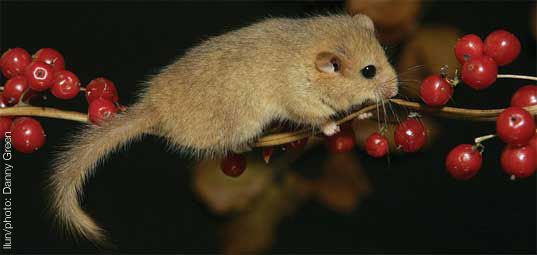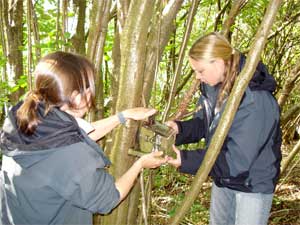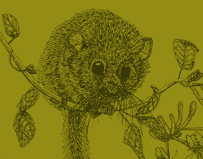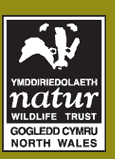
This project is funded by







The North Wales Dormouse Project
The North Wales Dormouse Project aims to give us a better understanding of where Hazel Dormice (Muscardinus arvellinarius) can be found across North Wales as well as increase awareness of dormice and the issues that affect them.
Currently we know that there is a large population of dormice in Coed Fron Wyllt Wood near Ruthin. This site has been studied for many years by the Forestry Commission, who manage the wood, but since 2005 the North West Dormice Partnership has intensified the study. The site now has one of the largest known dormouse populations in the UK and individual dormice are being systematically microchipped so that we can learn about their movements within the wood.
Rhian Hughes
Dormouse Project Officer
The Wildlife Trust's Dormouse Project expands on this work by finding out if dormice are present in Coed Fron Wyllt Wood and in the surrounding woodlands. A study will also be undertaken on the wildlife corridors between these woodlands, and this will help us to understand whether dormice are moving between woodlands or whether each population is isolated.
The Project will also look at other sites across North Wales where dormice may be present, concentrating on sites that have suitable dormouse habitat as well as confirming reports of dormice from the public. As well as potential new sites the project will also step up monitoring of other sites where we already know there are dormice present.

The above photo shows a dormouse box with a nest inside being put back on the tree. The dormice are then 'posted' back into their nest through the hole in the back of the box.
The Dormouse Project has been funded by PTES, CCW, HLF, Sharp Manufacturing Co of the UK, Chester Zoo, First Hydro and Conwy County Borough Council.
Rhian Hughes is the Dormouse project officer for North Wales. The work Rhian does includes making and erecting dormouse boxes, surveying the boxes and connectivity studies of the wildlife corridors between sites. As well as this she also visits sites where the habitat may be suitable for dormice and follows up any sightings.
Rhian says, “This project is really exciting and will hopefully lead to us discovering new dormouse sites across North Wales and possibly a first on Anglesey. It will also give us a greater understanding of dormouse movements between woodlands and which habitats they prefer. I never get fed up of opening the boxes, even if I have been bitten a number of times!”



